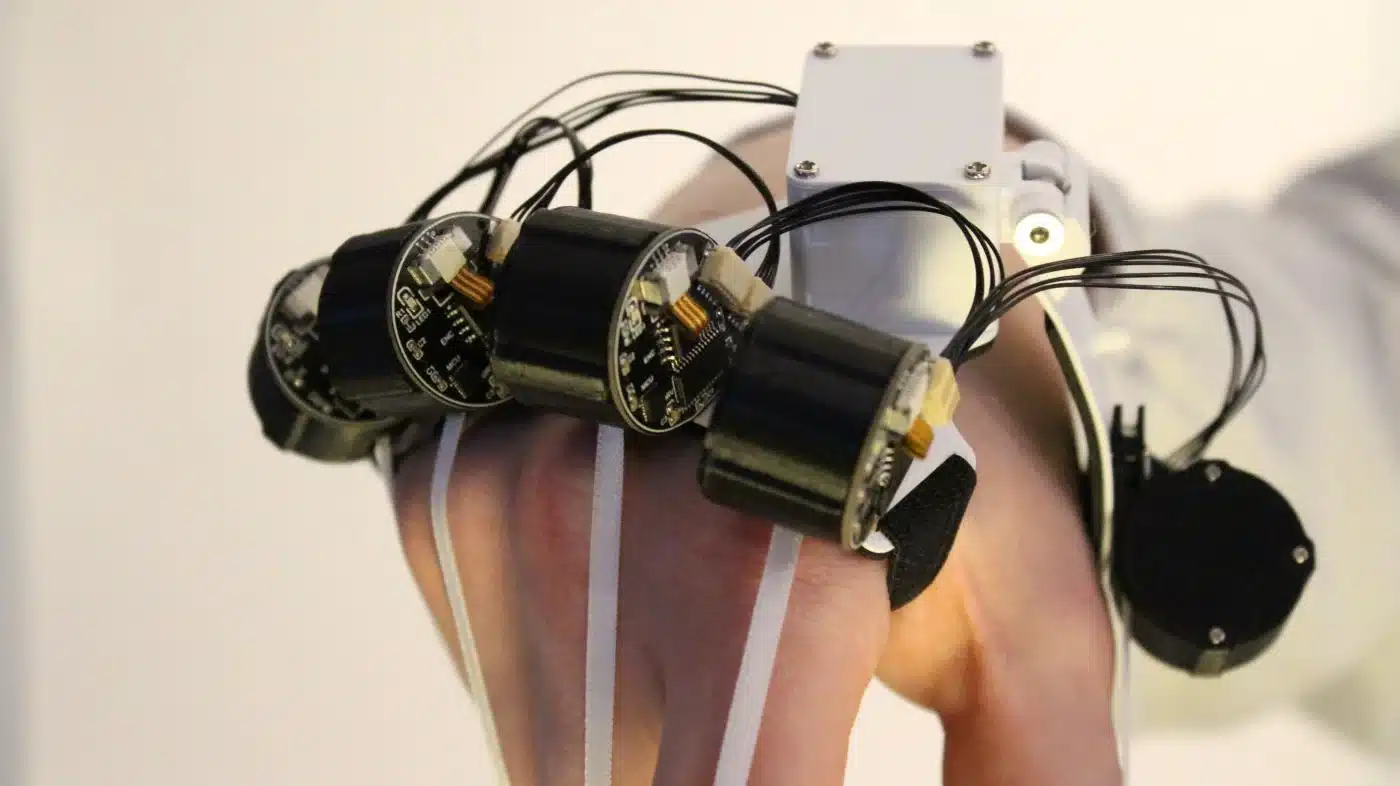Haptic gloves allow users to interact much more intuitively and convincingly with virtual objects and virtual worlds. As such, they are viewed by many to be the next opportunity to increase the sense of immersion provided by XR technology.
Unfortunately, haptic gloves are still pretty cutting-edge technology. As such, currently available products on the market are largely limited to dev kits priced for researchers or enterprise users. However, one company, Bifrost, just passed its crowdfunding goal for its first product – the Pulse haptic glove – which could make haptics affordable to many more users.
Meet the Pulse Haptic Glove From Bifrost
“We designed Pulse with enthusiasts in mind every step of the way,” reads the product’s crowdfunding page. “After nearly five years of development, we’re proud to say that Pulse is the most accessible haptic glove on the market.”
The glove, which consists of motors resting over the knuckles that apply pressure by pulling caps worn on the fingertips, went on Indiegogo with a goal of $20,000 but had raised more than three times that much by the time the backing window closed. And yes, those finger caps also have integrated trackers for precise controls within XR.
“Our glove offers precise finger tracking and realistic haptic feedback, creating a new level of immersion,” Bifrost founder Sam Baker said in an email to ARPost. “Pulse is a promising alternative to existing haptic devices that are out of reach for most consumers due to the steep price.”

The gloves are going for $300. Compare that to the $4,500 HaptX G1 launched last year. The glove appears to have a more “open” design than some competitors, but that may not be the final iteration. According to the crowdsourcing page, the product is still currently in the prototyping stage.
Fitting in the Market
There are a few companies out there making gloves for haptics and finger tracking. Other models are larger and more expensive, but that doesn’t mean that they aren’t worth thinking about. Even if they’re out of your price range, understanding other haptic gloves can help you wrap your head around what the team at Bifrost is doing.
Most of the heavy hitters have a similar basic mechanism as Pulse – most are a little smaller and all are more contained. But, keep in mind that we’re seeing a prototype from Bifrost. We should be thanking them for showing us such an unobstructed view of how haptics work – even if we hope that they make improvements before launch.
However, there are different kinds of haptic sensations that different kinds of products allow – sometimes in tandem. For example, tensile resistance isn’t the only sensation that your hands can feel – even if it is a really good start.
We drew a price comparison with HaptX, but those gloves aren’t 15 times more expensive for no reason. In addition to an arguably fairly standard grip simulation system, HaptX gloves have “hundreds of microfluidic actuators across your fingers and palms” that provide a far more immersive haptic experience – and require a massive piece of hardware called an “Airpack.”
SenseGlove offers a medium – a bulkier package than Pulse, but less ambitious haptics than HaptX. The closest thing on the market to Pulse in terms of form factor might be MANUS, though MANUS focuses on tracking rather than haptics and is priced in above HAPTX.
Would You Try Them On?
The bad news is that Pulse costs almost as much as a new entry-level headset. The good news is that that’s orders of magnitude less than the nearest competitor. While many price-conscious users will no doubt go without even these most affordable haptic gloves, Pulse will no doubt do what the manufacturers intends – open up the market to enthusiasts and “prosumers.”



